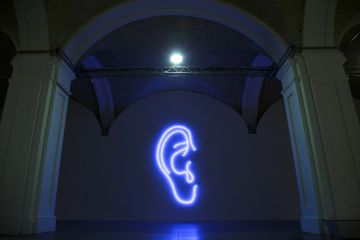Trypillia, Kyiv region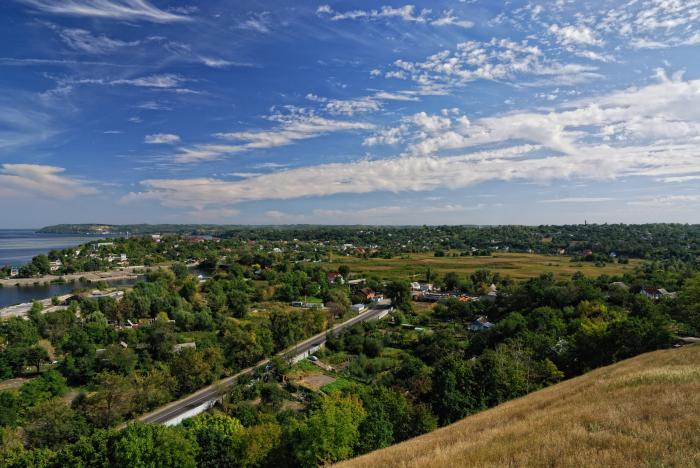
To start with the classics, probably one of the most well-known villages with historical value is Trypillia, located in an hour away from busy and noisy Kyiv. In 1887, Ukrainian archeologist Vikentiy Khvoyka discovered a large site of the Neolithic era, dating back as far as 4300–4000 B.C. The site belonged to a yet unknown to the historical community culture — Cucuteni-Trypillian, or simply Trypillian. The sensational discovery made by Khvoyka has made the village known worldwide, and visited by many scholars, as well as tourists. Nowadays, Kyiv Regional Archeological Museum, located in the village shows the history of Neolithic times. The constant exposition gives an idea about the most ancient settlements on the territory of Ukraine, including Trypillia, their agriculture, settlement types and ceramics.
Mezyn, Chernihiv region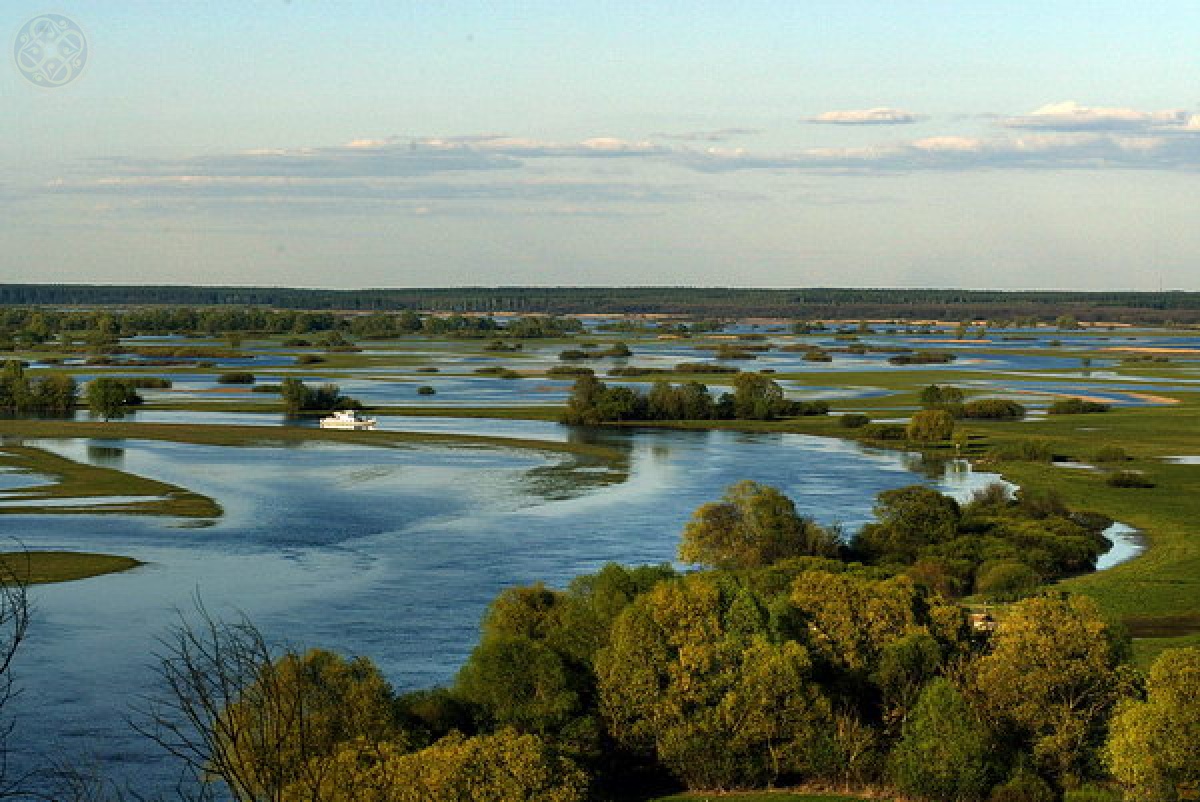
Another village known for archeological discoveries, Mezyn is also astonishing with its surrounding nature — placed right in the middle of Mezynskyi National Park, founded to protect the beautiful forests and moors. The place is called “Mezyn Switzerland” due to the unique combination of untouched nature, oak forests, and crystal-clear lakes that surround the national park. After a long walk in the park, tourists turn their attention to Mezyn Archeological museum, where unique decorative elements from the Paleolithic age are safekept nowadays. There, guests have a chance to see bracelets, engraved with what presumably is a lunar cycle, statuettes of women and animal figurines made from mammoth’s tusk.
Strusiv, Ternopil region
An overlooked spot on the map of Western Ukraine, Strusiv is actually a location of one of the most beautiful churches of the region — St. Anthony Catholic Church. Built in 1894, the church, or kostiol in Ukrainan, respects the rules of Neo-gothic style with its high peak tower. Due to the location on the high hill, St. Anthony Church can be seen from any point of the village. Strusiv is truly a place that symbolizes multiple confessions in Ukraine: Chortova Debria Tract still has an intact underground church, built from stone by seventeenth century monks. The way to the stone church lies through the white baroque chapel, built in 1774 and renovated after long dilapidation in the USSR.
Read: Khortytsya Island in Ukraine
Rozhirche, Lviv region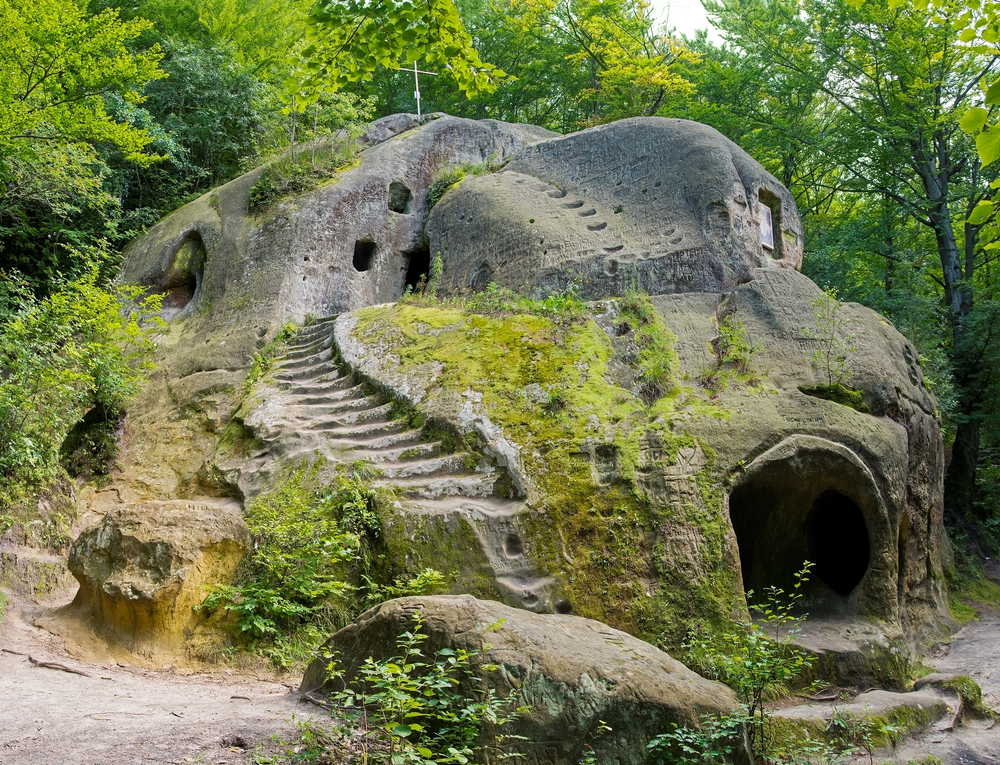
The first mentions of Rozhirche village date back to 1460, all thanks to the unique cave monastery that lies here. The cave was formed more than 70 million years ago, and was intensively used by pagans, which can be seen from the traces on the cave walls. According to historical estimates, monastery was built during the 13-14th centuries. Locals tell the stories of its life: male monks, who ran away from the Kievan Rus, destroyed by Tatar-Mongol invasion, founded the monastery and devoted their lives to God here. Apart from the monastery, visitors can explore the hillfort of Old Rus that dates back to the 16th century.
Ozeryany, Ternopil region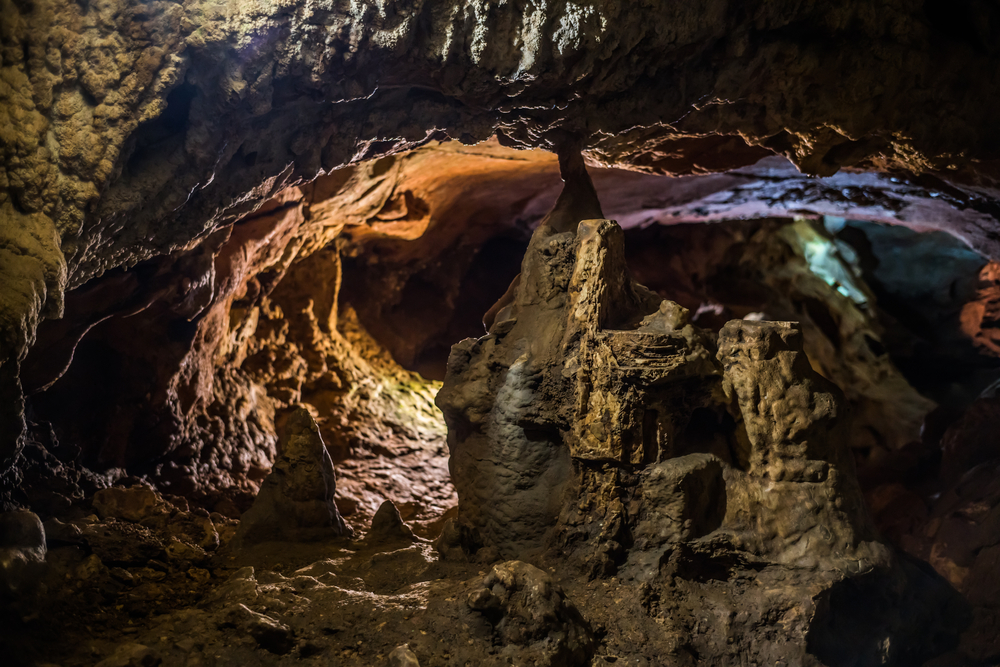
This tiny village located in 1,5-hour drive from Ternopil is a true paradise for historians and those who marvel wonders of the world: from one of the most visited speleo sites in the world, Mlynky Cave, to Slavic settlement of the 13th century, to the beautiful St. Anna Church built in 1875 according to the canons of Neo-Gothic style. One of the longest caves in Europe, Mlynky calls for those who want to explore the narrowest parts of the region, full of beautiful crystals of different shapes and sizes, and see the small lake with fresh water inside the cave. St. Anna Church was designed by renown architect Adolf Kuhn, whose plans gave birth to numerous churches in Western region, as well as Sapieha Palace in Lviv.
Braha, Khmelnytsk region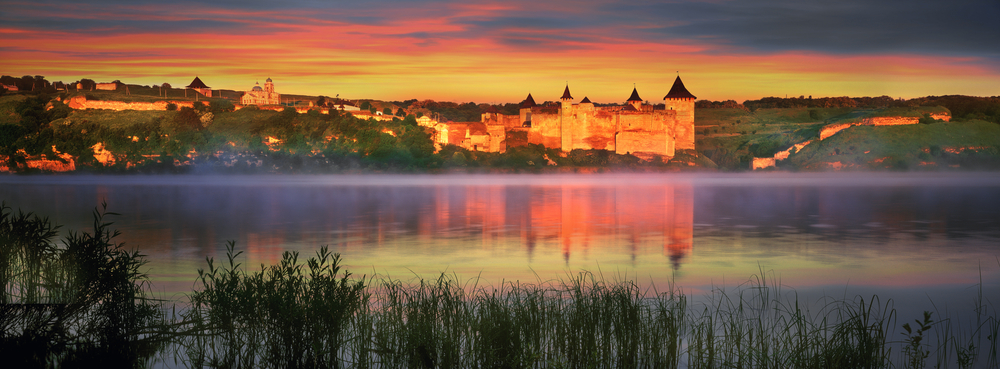
Photographers from the entire world choose this village for the lesser known, but just as astonishing view on the Khotyn fortress — one of the most preserved citadels in Europe. The village, however, is more than just a place to look at the fortress — gate at the entrance to Braha hides a large Polish cemetery with Neo-Gothic tombstones, and the historical reward to those who walked through the thick trees — Zebrowski mausoleum, where the last burying dates back to 1909. The small mausoleum is well-kept and can be freely visited. Moreover, Braha is located on the territory of Podilski Tovtry National Nature Park, which is a preserve for more than a thousand types of flora; some of them belonging to the list of endangered in Ukraine.
Pidhirtsi, Lviv region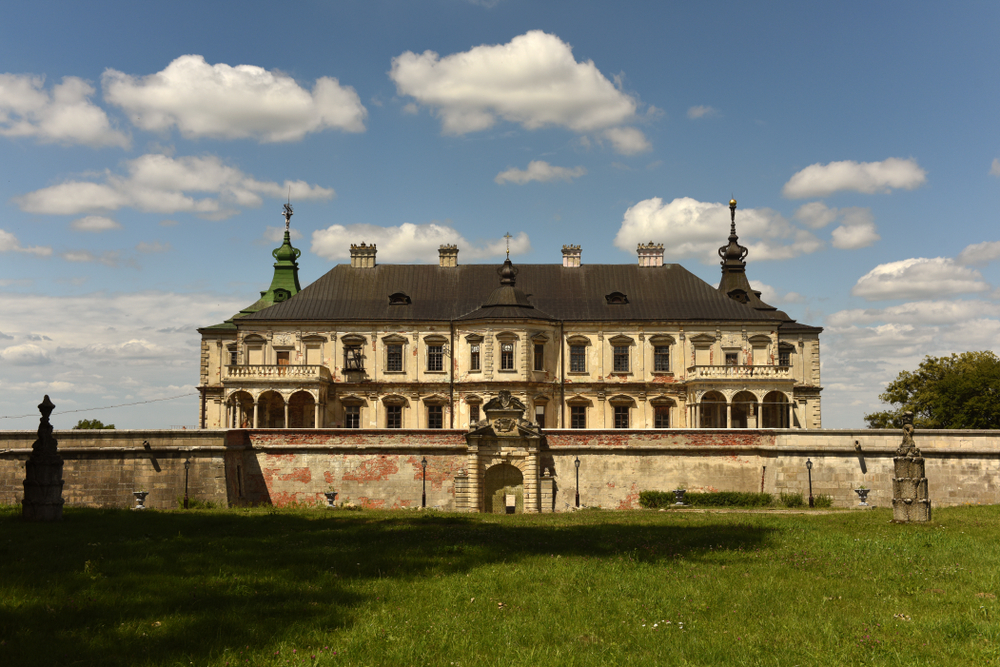
In mere 80 kilometers from Lviv lies a small village Pidhirtsi, famous for its Renessaince-styled castle. Included in the top-10 Ukrainian locations by Depositphotos.com, the castle amazes by massive gates with two columns and elegant Italian garden. Guillaume Le Vasseur de Beauplan constructed it in 1635–1640, following the order of the Polish-Lithuanian Commonwealth's Grand Crown Hetman Stanisław Koniecpolski. Pidhirtsi castle was regarded as one of the most important garden complexes of the former Polish-Lithuanian Commonwealth; and it lures in tourists even nowadays. Unfortunately, inside of the castle is still under reconstruction, but the outside is just as beautiful as ages ago.
Read: Latin Cathedral Is One of Lviv’s Most Impressive Churches
Sutkivtsi, Khmelnytsk region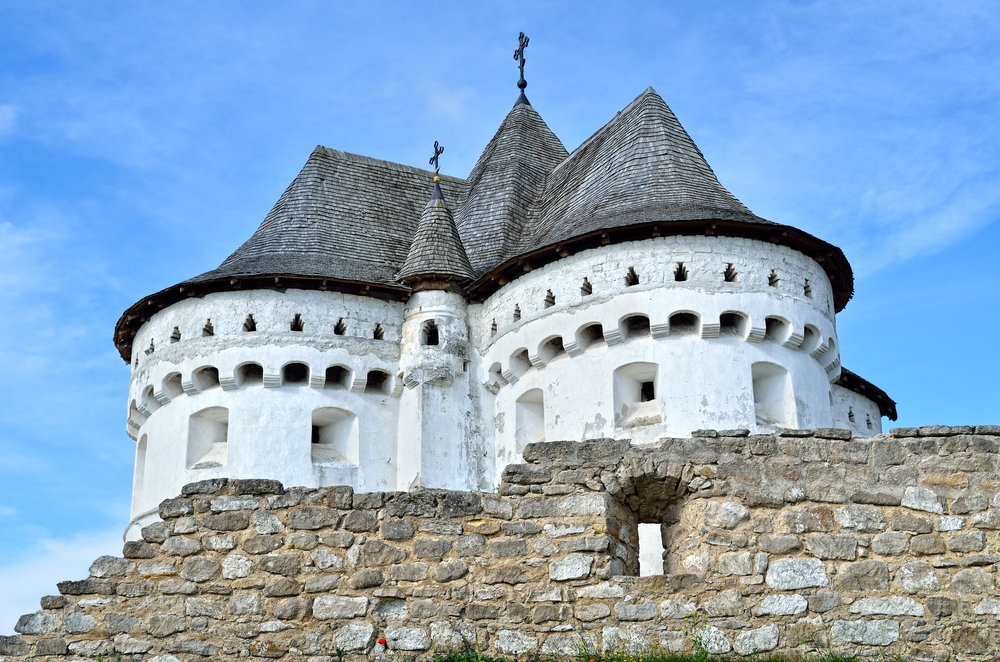
The village is famous for a unique fortification construction — tetraconch defense church, the one and the only in Ukraine. Built in 1462, Sutkivtsi Church of the Intercession is one of the oldest defense churches in the country, still functioning till this day. The church was closed twice during the anti-religious campaigns of the Soviet Union, and unique frescos, painted on the walls, were ruined during the unprofessional repairs in the 1990s. Luckily, due to the efforts of Ukrainian restorers, Sutkivtsi Church has gained its primal view, and visitors can enjoy the old frescos, as well as the 19th century oil paintings.
Roztoky, Chernivtsi region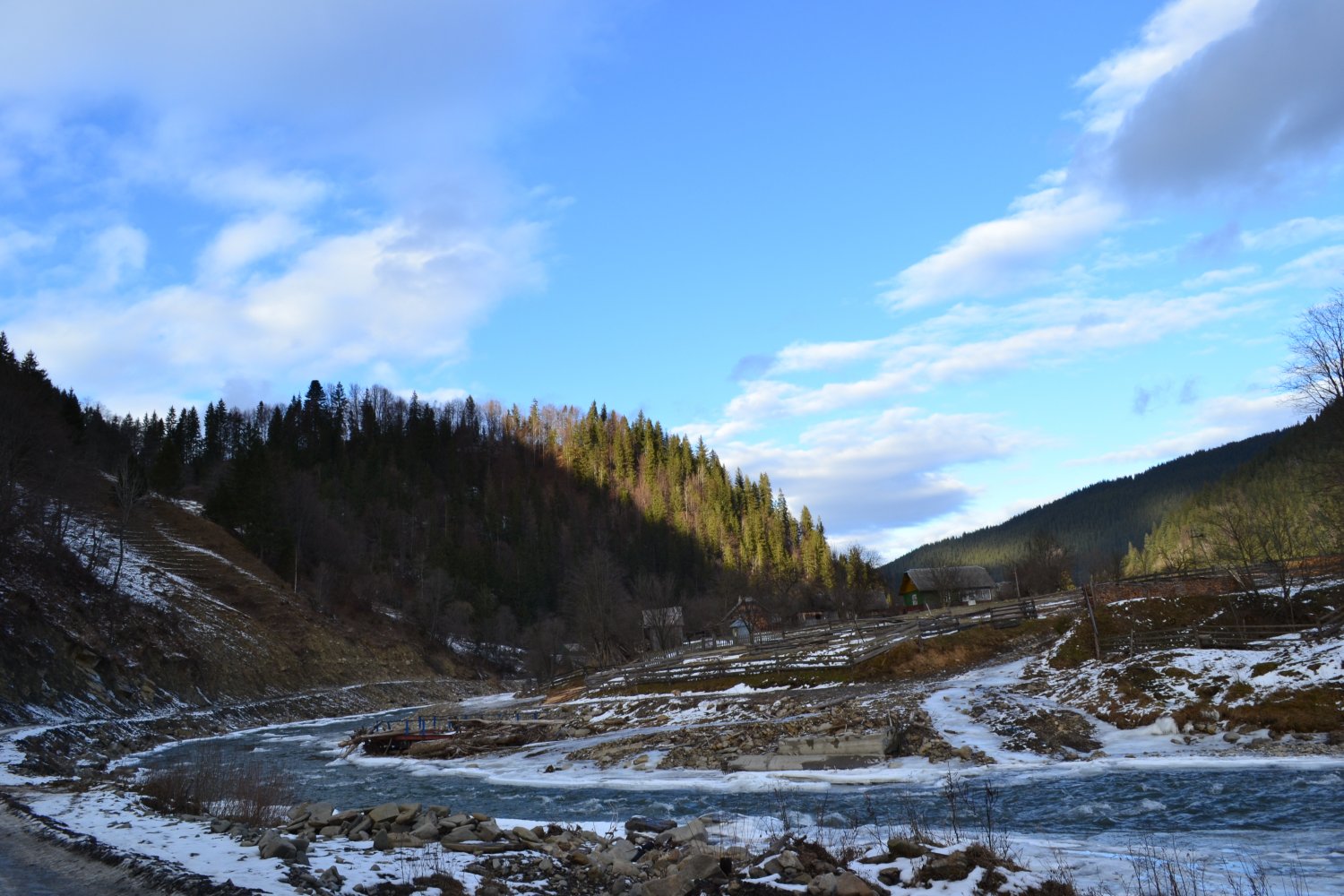
Those who like active leisure and hiking know this quiet corner located in Bukovyna. After all, that’s where the Bukovina Waterfalls can be found. 7 waterfalls, the largest and widest being 19 meters, lure in tourists and hikers throughout the year. Roztoky village itself saw the history of Ukraine starting from the Middle Ages — firstly Kievan Rus, then Kingdom of Galicia–Volhynia. The village saw the times of Moldovian and Austrian reign, as well as Romanian occupation during the WWII. Nevertheless, the colorful building of Assumption, or Uspenska, Church located in Roztoky still stays intact and functions to this day.
Frumushika-Nowa, Odesa region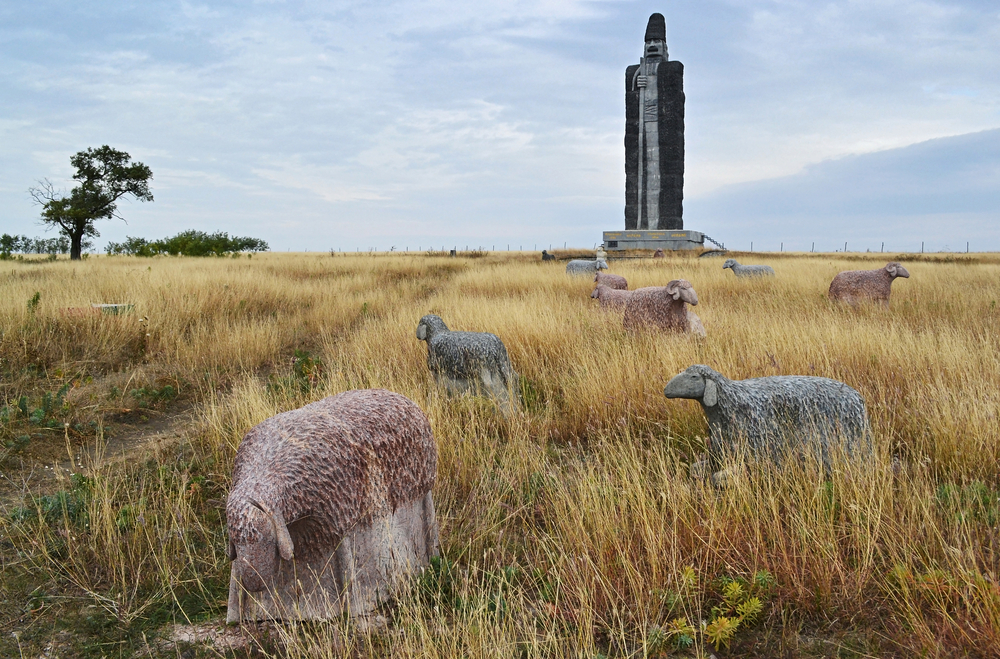
Last but not least, a unique place that reminds of multi-nationality of Ukraine: Frumushika-Nowa has numerous architectural constructions of Ukrainian, Moldavian, Russian, German and Gagauz culture. The village dates back to the 17th century, and was considered quite large for the time — around five hundred houses, two elementary schools and a hospital. Nowadays, an ethno-village complex located in Frumushika-Nowa shows visitors the architecture, livelihood and traditions of the 19th century Bessarabia. Moreover, the houses function as a hotel, where guests can rest and stay the night pretending to be peasants. The local zoo entertains kids with beautiful fauna: black swans, peacocks, llamas and fallow deer.
Read: How Can I Visit Chernobyl and Is It Safe?
Photo sources: shutterstock.com, wikimapia.com, kolokray.com, kot-gelatin.livejournal.com, UA-travel.info. All images belong to their rightful authors.
10 Unique Villages in Ukraine
Most printed Ukraine travel guides are usually focused on the largest cities: Kyiv as the necessary capital, Lviv as the heart of Western Ukraine, Odesa as city by the Black Sea. Often, tourists simply visit everything located just near those three, omitting the wonders that wait to be discovered. Destinations gathered top-10 unique Ukrainian villages to visit for best impressions.

